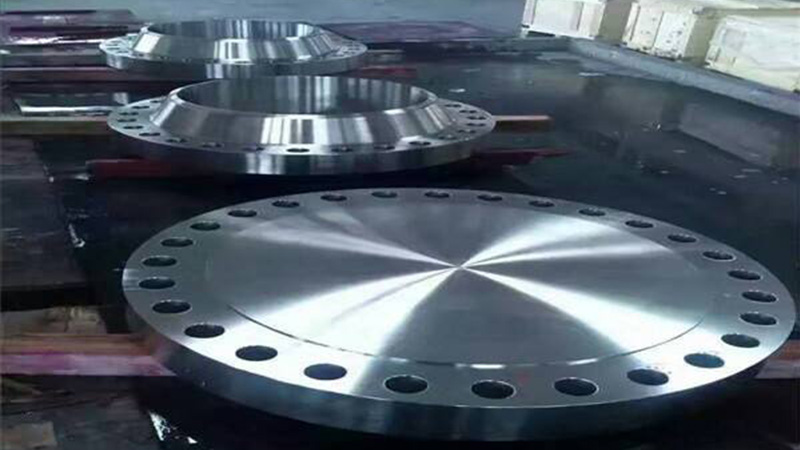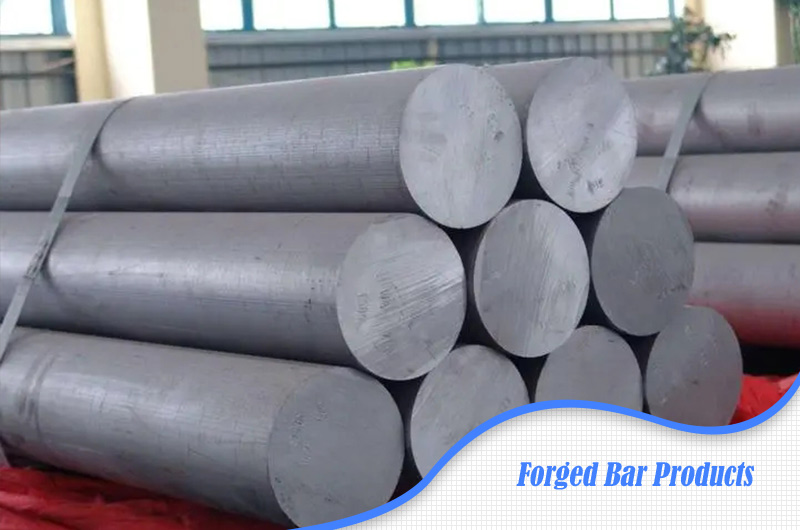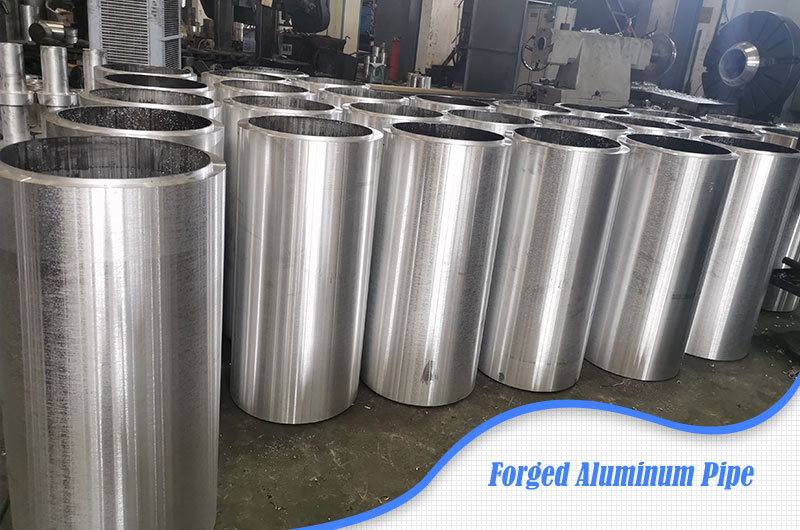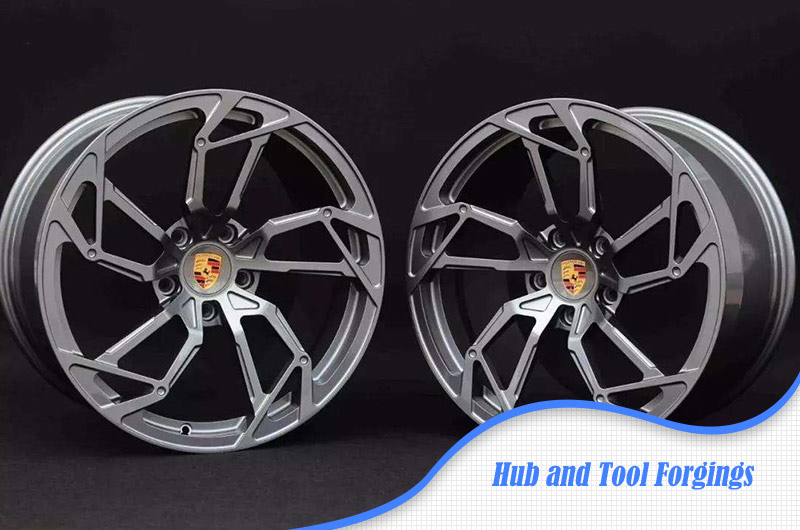Aiboer Technology forging products offer a wide range of die forging alloys, configurations, tempering and dimensions. We can produce qualified aluminum forgings according to your requirements to achieve the best product effect.

Classification of common alloys for Aiboer Technology forgings
Alloy models of Aiboer’s aluminum forging products include 2A14, 2214, 2219, 4A11, 4032, 5A02, 5083, 6A02, 6061, 6063, 7A04, 7049, 7050, 7175, 7475, etc. We also has the ability to forge the 6000 and 7000 series materials.
Products in Aiboer include forged bars, forged aluminum tubes, rolled forged rings, discs, hubs, blocks, shafts, and other forged shapes. We can also provide customized aluminum forging production services to meet your application needs.

2000 series aluminum forgings
2000 series aluminum alloys are used in many industries, including aerospace, national defense and power generation. The following are some typical 2 series alloy models for Aiboer’s aluminum forgings.
2014 aluminum forgings
2014 aluminum alloy is used to manufacture rims with high strength, hardness and load, such as truck frames and suspension assemblies, fuel tanks, rocket booster structures, etc. It can also produce 2014 coated aluminium material to improve its corrosion resistance.
| High Temperature Tensile Properties of 2014 Aluminum Alloy at Different Temperatures | ||||
| Temper | Temperature/℃ | Tension strength Rm/MPa | Prescribed plastic elongation strength Rp0.2/MPa | Elongation A (%) |
| T6 | 100 | 439 | 393 | 15 |
| 150 | 276 | 241 | 20 | |
| 204 | 110 | 90 | 38 | |
| T6 | 260 | 66 | 52 | 52 |
| 315 | 45 | 34 | 65 | |
| 370 | 30 | 24 | 72 | |
2A14 aluminum forgings
2A14 aluminum alloy is a high-strength forged Al-Cu-Mg-Si alloy, which can be heat strengthened. 2A14 aluminum alloy is used to manufacture free forging and die forging under high load, as well as large frame, axle, large shell, truck parts, etc. However, due to the difficulty of heat pressing, the application of this alloy is limited
| 2A14 Mechanical properties of die forgings and free forgings | |||||
| Temper | Direction | Tension strength Rm/MPa | Prescribed plastic elongation strength Rp0.2/MPa | Elongation A (%) | |
| Free forgings | T4 | Portrait | 380 | 245 | 10 |
| T6 | Portrait | 410 | - | 8 | |
| Die forgings | T4 | Portrait | 380 | 245 | 11 |
| T6 | Portrait | 430 | 315 | 10 | |
2214 aluminum forgings
2214 aluminum alloy is a kind of high-strength forged Al-Cu-Mg-Si alloy, which can be strengthened by heat treatment. 2214 aluminum alloy is used to manufacture complex free forgings and die forgings. Due to the tendency of intergranular corrosion and stress corrosion, it is not suitable for manufacturing thin section parts.
| Free Forgings as stipulated in Technical Standards for Aluminum | |||||
| Temper | Specs/mm | Direction | Tension strength Rm/MPa | Prescribed plastic elongation strength Rp0.2/MPa | Elongation A (%) |
| T6 | ≤100 | Portrait | 460 | 390 | 8 |
| Long transverse | 460 | 390 | 5 | ||
| Short transverse | 420 | 390 | 4 | ||
2218 aluminum forgings
2218 is applicable to forging pistons of aircraft engines and diesel engines, cylinder heads of aircraft engines, impellers and compressor rings of jet engines.
2618 aluminum forgings
2618 is a heat-resistant deformation aluminum alloy that can be strengthened by heat treatment. Its working temperature can reach 250 ℃. It is used to manufacture supersonic aircraft structures for long-term work, such as fuselage, wing skin frame and tail wing. It can also be used to manufacture low-speed aircraft parts with operating temperature not higher than 150 ℃ and jet engine parts with operating temperature not higher than 150 ℃.
2618A aluminum forgings
2618A has high heat resistance and good cold and hot working performance. After solution treatment and artificial aging treatment, the corrosion resistance of the alloy is obviously improved, but there is a tendency of intergranular corrosion. It has the medium weldability and good machinability.
| Room Temperature Tensile Properties of 2618A Aluminum Alloy Forgings in T61 State | |||||
| Type | Specs/mm | Direction | Tension strength Rm/MPa | Prescribed plastic elongation strength Rp0.2/MPa | Elongation A (%) |
| Die forgings | Thickness≤100 | 400 | 310 | 4 | |
| 380 | 290 | 4 | |||
| Flat forging | ≤50 | Portrait | 400 | 325 | 7 |
| Long transverse | 380 | 290 | 5 | ||
| Short transverse | 360 | 290 | 4 | ||
| 51-76 | Portrait | 400 | 315 | 7 | |
| Long transverse | 380 | 290 | 5 | ||
| Short transverse | 360 | 290 | 4 | ||
| 77-100 | Portrait | 385 | 310 | 7 | |
| Long transverse | 365 | 275 | 5 | ||
| Short transverse | 350 | 270 | 4 | ||
4000 series aluminum forgings
4000 series aluminum alloy forgings are mainly used to manufacture materials for pistons and cylinders of steam engines, as well as complex forgings that work below 200 ℃ and bear heavy loads. The following are some typical 4 series alloy models for Aiboer’s aluminum forgings.
4A11 4032 aluminum forgings
4A11 and 4032 are Al-Si-Cu-Mg series forged aluminum alloys. They can be strengthened by heat treatment. It has the advantages of small thermal expansion coefficient, good wear resistance, good heat resistance, fatigue resistance and low temperature mechanical properties. It also has good thermal plasticity and good corrosion resistance.
4A11 and 4032 aluminum alloy forgings are mainly used to manufacture materials for pistons and cylinders of steam engines, as well as complex forgings that work below 200 ℃ and bear heavy loads.
| Tensile Properties of 4A11 4032 Aluminum Alloy at Room Temperature and Low Temperature | ||||
| Temper | Temperature/℃ | Tension strength Rm/MPa | Prescribed plastic elongation strength Rp0.2/MPa | Elongation A (%) |
| T62 | -200 | 460 | 337 | 11 |
| -100 | 415 | 325 | 10 | |
| T62 | -30 | 385 | 315 | 9 |
| 25 | 360 | 290 | 2.5 | |
5000 series aluminum forgings
5000 series aluminum alloys are used in many industries, including various national defense departments. The following are some typical 5 series alloy models for Aiboer’s aluminum forgings.
5A02 aluminum forgings
5A02 alloy has low strength and high plasticity. Cold deformation can improve its strength, but reduce its plasticity. It has good properties of hydrogen atom welding, contact welding and friction stir welding. It can also be gas welded and has high corrosion resistance. It is mainly used for manufacturing pipes, liquid containers and sliding frames, as well as aircraft mailboxes and conduits, welding wires, rivets and ship structures.
| Calibrated Mechanical Strength of 5A02 Alloy Semi-finished Products | |||||
| Standard | Type | Temper | δ or d/mm | Tension strength Rm | A/% |
| Not less than | |||||
| OD ≥50, Wall thickness≤5.0 | ≥215 | ||||
| GJB 2351 | Free forging, Die forging | H112 | As agreement | ≥177 | ≥15 |
| HB 5204 | |||||
| GB/T 3196 GJB 2055 | Wire | H×8 | 1.6~10.0 | ≥118 | - |
5A05 aluminum forgings
5A05 alloy has high magnesium content. Although cold deformation can improve its strength, its plasticity will decrease accordingly. 5A05 alloy has high process plasticity, but the cold work hardening speed is fast during cold deformation, so this point should be paid more attention when machining parts.
In aircraft manufacturing, this alloy is usually used to manufacture parts with high process plasticity and corrosion resistance, as well as welded pipes, liquid containers, welded structures, aircraft skin skeleton, etc.
| Calibrated Mechanical Strength of 5A05 Alloy Semi-finished Products | ||||||
| Standard | Type | Temper | δ or d/mm | Tension strength Rm/Mpa | Rp0.2/Mpa | A/% |
| GJB 2351 | Free forging, Die forging | H112 | As agreement | ≥196 ≥220 | - - | ≥10 ≥12 |
5A06 aluminum forgings
5A06 alloy has the highest Mg content (6.3%) and Mn content (0.65%). The average total content of Mg and Mn reaches 7%. Because of its high strength, relatively low plasticity, good corrosion resistance and weldability, it has been widely used in aviation, aerospace, missile, ship, automobile, tank and other industries. It is mainly used for welding structural parts, cold forgings, stress parts of welding vessels, aircraft skin skeleton parts and rivets.
| Calibrated Mechanical Strength of 5A06 Alloy Semi-finished Products | ||||||
| Standard | Type | Temper | δ or d/mm | Tension strength Rm/Mpa | Rp0.2/Mpa | A/% |
| GJB 2351 | Free forging, Die forging | H112 | As agreement | ≥196 ≥220 | - - | ≥10 ≥12 |
6000 series aluminum forgings
6000 series aluminum alloys are used in many industries, including oil and gas, petrochemical and marine sectors. The following are some typical 6 series alloy models for Aiboer’s aluminum forgings.
6A02 aluminum forgings
6A02 is a forged Al-Mg-Si alloy. It has medium strength, high plasticity in annealed state and high plasticity in hot state. It is easy to forge and punch. Forged aluminum 6A02 is widely used in industry, for example, in manufacturing parts that require high plasticity and corrosion resistance to cut and withstand medium loads.
6A02 can also be used to manufacture forgings with complex shapes, such as air cooled engine crankcase, helicopter blades, aircraft engine parts, forgings with complex shapes, die forgings and other forgings requiring high plasticity and corrosion resistance of mechanical parts, as well as the working temperature of parts.
| High Temperature Tensile Properties of 6A02 Alloy | |||||
| Temper | Direction | Tension Strength Rm/MPa | Prescribed plastic elongation strength Rp0.2/MPa | Elongation A (%) | |
| Free forgings | T6 | Portrait | 275 | - | 10 |
| Mould forgings | T6 | Portrait | 295 | 215 | 12 |
6151 aluminum forgings
6151 alloy T6 T652 aluminum forgings are generally used for forging crankshaft parts. Machine parts and rolling ring conducting mine and machine parts have good forgability, high strength and corrosion resistance. All parts requiring good forging performance, high strength and good corrosion resistance can be processed with this alloy.
| Tensile mechanical properties of 6151 aluminium alloy forgings | ||||
| Temper | Tension strength Rm/MPa | Prescribed plastic elongation strength Rp0.2/MPa | Elongation A (%) | |
| Mould forgings T6 | Axis parallel to grain flow direction | 303 | 225 | 14 |
| Axis parallel to grain flow direction | 303 | 255 | 6 | |
| Forged ring T6, T652 | Radial direction | 303 | 255 | 5 |
| Axial direction | 303 | 241 | 4 | |
| Radial direction | 290 | 241 | 2 | |
7000 series aluminum forgings
7000 series aluminum alloys are used in many industries, including aerospace, national defense and racing. The following are some typical 7 series alloy models for Aiboer’s aluminum forgings.
7A04 aluminum forgings
7A04 alloy is an Al-Zn-Mg-Cu heat treatment strengthening alloy. Its strength is higher than that of duralumin. Its yield strength is close to tensile strength, and its plasticity is low.
7A04 aluminum forgings are widely used in the main load-bearing parts of aircraft structures, such as girders, trusses, diaphragms, skins, wing ribs, joints, landing gear parts, etc. It can also produce various semi-finished products, such as plates, strips, profiles, bars, wallboards, pipes, wires, free forgings and die forgings.
| Physical Property of 7A04 aluminum forgings forged product parts | |||||||||
| Alloy | Type | Temper | δ Specs/mm | Direction | σb/MPa | σp 0.2/MPa | δ % | Standard | |
| 7A04 | Free forgings | T6 | Weight ≤30KG | L | 510 | 420 | 6 | GJB 2351-1995 | |
| Weight>30KG | L | 510 | 420 | 5 | |||||
| Die forgings | T6 | Weight≤30KG | L | 530 | 440 | 6 | |||
| Weight>30KG | L | 430 | 440 | 6 | |||||
7050 aluminum forgings
7050 aluminum alloy has high fatigue limit, good toughness, good stress corrosion resistance, good hardenability, and high strength. It has general weldability and good cutting performance.
7050 is mainly used for high strength, good fracture toughness, and high stress corrosion cracking resistance and spalling corrosion of the main bearing structural parts, such as aircraft structure with thick plates, extrusions, free forgings and die forgings, such as aircraft structure with thick plates, extrusions, free forgings and die forgings, including fuselage frames, partitions, wing beams, landing gear support parts and rivets.
7150 aluminum forgings
7150 T77 aluminum forging is an improved 7050 alloy with high strength and good corrosion resistance. It is mainly used for large passenger aircraft upper wing structure, fuselage plate beam flange, upper outer plate main wing longitudinal beam, fuselage reinforcement, keel beam and seat guide rail.

7175 aluminum forgings
7075 aluminum forging is a high-strength deformed aluminum alloy strengthened with heat treatment. They can produce products of various types and sizes. They are the most widely used high-strength aluminum alloys. It has several heat treatment states: T6, T73 and T76. T6 state has the highest strength, but lower fracture toughness.
7075 aluminum forgings
7175 improves the purity of 7075 alloy. It is mainly used for die forgings. It has three heat treatment states: T66, T74 and T7452. 7175 alloy is specially used to produce forgings and rolling rings.
Aiboer Technology forging product type
Forging block
Our custom forged block, not only allow for a near-net shape, but they also have inherent advantages achieved through the forging process. Our forged bars are used for a wide variety of industries, such as Service Centers, Shipbuilding, OEM, Defense and Mining.

Forged bar products
Our factory has special planing, cutting, heat treatment, straightening, machining and testing equipment to ensure consistent high quality and fast turnover of forged bar products. Our bar forging products are used in a variety of applications, such as aerospace, defense, infrastructure, mining, nuclear energy, oil and gas, heavy industrial equipment and power generation.

Forged aluminum pipe
Forged aluminum tubes can not only be produced into straight cylindrical shape, but also have an infinitely variable outer diameter and inner diameter. We also provide various wall thicknesses and configurations to meet customer requirements. The hollow inner diameter is forged by a solid bar rather than drilled, saving time and money for customers and reducing material waste.

Forged aluminum ring
When purchasing hubs and spindles, product integrity is critical often making or breaking a part in the field. Machined castings or hot-rolled machined bars tend to have poor structural integrity or inclusions that lead to problems with cracking and part failure. Forging has proven to be a successful solution to these problems.

Hub and tool forgings
When purchasing hubs and spindles, product integrity is critical. Machined castings or hot rolled bars often have poor structural integrity or inclusions, leading to cracking and part failure. Forging has been proved to be a successful method to solve these problems.

Forged step shafts, crankshafts and rotor shafts
The aluminum forging products used in heavy industrial fields need the best character in strength and reliability. Our years of custom forging expertise allow us to manufacture custom forged crankshafts to meet the most exacting specifications. At Aiboer, we produce guaranteed sound-centered forged step shafts, crankshafts and rotor shafts with any combination of round, square, rectangle or polygonal dimensions, concentric or eccentric configurations and tapers or custom shapes.

Production of Aiboer Technology forgings
Casting and forging
Forging is a manufacturing process in which metal is pressed, knocked or extruded into high-strength parts under great pressure. This process usually (but not always) performs hot working by preheating the metal to the desired temperature before processing. It is important to note that the forging process is completely different from the casting (or casting) process, because the metal used to make forged parts will never melt and pour.
| Compare | Casting | Forging |
| Strength: | Casting cannot obtain the strengthening effects of hot and cold working. | Whether open or closed die forging is used, the forging process surpasses casting in predictable strength properties – producing superior strength that is assured, part to part. |
| Prevention of defects through pre-working: | A casting has neither grain flow nor directional strength, and the casting process cannot prevent formation of certain metallurgical defects. | Preworking forge stock produces a grain flow oriented in directions requiring maximum strength. Dendritic structures, alloy segregations and like imperfections are refined in forging. |
| Reliability of Production: | Casting defects occur in a variety of forms through the production process, requiring tight process controls and inspections to ensure a reliable final product. | Casting defects occur in a variety of forms through the production process, requiring tight process controls and inspections to ensure a reliable final product. |
| Response to heat treatment: | Casting defects occur in a variety of forms through the production process, requiring tight process controls and inspections to ensure a reliable final product. | Forgings respond more predictably to heat treatment and offer better dimensional stability. |
| Flexibility of production to demand: | Some castings, such as special performance castings, require expensive materials and process controls, as well as longer lead times. | Open die forging processes adapt to various production run lengths and enable shortened lead times. |
Aluminum mold forgings and free forgings
Free forgings
Free forging is a processing method that uses impact force or pressure to make the metal deform freely in all directions between the upper and lower anvil surfaces without any restrictions to obtain the required shape, size and certain mechanical properties.

Free forging uses simple the tools and equipment, with the features of versatile and low cost. Compared with casting, free forging eliminates shrinkage cavity, porosity, porosity and other defects, so that the blank has higher mechanical properties. Forgings are simple in shape, flexible in operation, and products are generally with the simple shapes such as shafts and rings are produced.
Free forging controls the shape and size of forgings by manual operation, so the forging has low precision, large machining allowance, high labor intensity and low productivity. Therefore, it is mainly used for single piece and small batch production.
Mold forgings
Mold Forging is forging with molds, which are used to forge complex forgings with high precision requirements.
Free forging basically does not use molds, but can only forge extremely simple things such as shafts and rings. Mold forging can forge products with many structures, control the dimensional tolerance of products, and reduce the amount of turning.

Production process of aluminum forgings
The forging process can produce parts that are stronger than any other metalworking process. This is why forgings are almost always used on components that are critical to reliability and personal safety.
But you rarely see forgings, because they are usually parts included in the assembly items, such as aircraft, cars, tractors, ships, oil drilling equipment, engines, missiles and various equipment.
Because of the special requirements for hardness and strength of aluminum forgings, there are strict requirements for production process. Aiboer strictly controls each production process of aluminum forgings, strives to do the best in mold manufacturing, forging processing, finished product inspection, packaging and transportation, and provides customers with high-quality aluminum forgings.

Mold design and production
Die manufacturing is the first step for customized aluminum forgings. Once a new order is placed, our engineers will design the die according to the customer's aluminum forging drawings.
Aluminum billet cutting and heating
Our warehouse stores aluminum for forging production. After the die is completed, the aluminum billet will be taken out of the warehouse, cut into the required length, and heated for pretreatment before forging.
Closed die forging
Put the heated aluminum billet under the upper and lower molds, and then press it into the desired shape.
Heat treatment
In order to improve the strength and mechanical properties, heat treatment shall be carried out after forging. Like castings, common heat treatment methods for forgings include normalizing, quenching, annealing, tempering, solution treatment, etc. Heat treatment is only carried out when necessary.
Shot blasting
In order to remove oxide scale and obtain better surface quality, the forgings will be shot blasted. After shot blasting, the product will look clearer and smoother.
Machining
Our main processing equipment is CNC lathe and CNC. CNC lathes are used for simple machining, while CNC is used for precision machining.
Surface treatment
If there is no special surface treatment requirements, water/oil antirust paint can be applied before packaging. Sometimes, special surface treatment is carried out according to the application needs of aluminum forgings, such as painting, galvanizing, electroplating, etc.
Inspect
Inspection is also an important step. We can divide the inspection process into external inspection and internal inspection. External inspection includes dimension inspection and appearance defect inspection. Internal inspection refers to internal performance inspection.
Packaging and delivery
In order to protect the product from damage, we pack the product in plastic bags, and then put it into standard wooden boxes. In addition, we can also customize the packaging according to customer requirements.
Production capacity of Aiboer Technology forging
Aiboer has extensive aluminum forging expertise, engineering expertise and manufacturing capability, which makes us one of the famous aluminum forging products suppliers in the industry.
Aiboer has more than 30 years of experience in manufacturing various high-performance and safe forged parts. We focus on aluminum alloy material properties, mold design, process design and key technologies of aluminum alloy heat treatment. Our factory has 3 forging production lines, 1500 tons, 1000 tons, 630 tons and 160 tons of presses, mold manufacturing and design equipment, and perfect testing equipment. Provide a full range of services, from product design to engineering, manufacturing, testing and verification.
Our company mainly provides automobile, motorcycle and other industrial machinery forgings, such as connecting rod, crankshaft, various aluminum alloy forgings, etc. The company has strong technical force, advanced testing means, and the ability to independently develop and design new products. The products are exported to overseas markets.
Quality is our primary task and the core feature of our corporate philosophy. We always ensure to exceed customer expectations in terms of quality. We are a company certified by ISO 9001 and 2000, which create necessary conditions for high production reliability and process optimization. The continuous development of these systems and processes enables us to reduce costs for our customers while improving product quality.